Meiosis stages T3 W3
1/10
There's no tags or description
Looks like no tags are added yet.
Name | Mastery | Learn | Test | Matching | Spaced |
|---|
No study sessions yet.
11 Terms
3 major steps
1.DNA replication – interphase
2.Division 1: Meiosis I: separation of homologous pairs of chromosomes
⚬I. Prophase I
⚬II. Metaphase I
⚬III. Anaphase I
⚬IV. Telophase I
⚬Cytokinesis
3.Division 2: Meiosis II: separation of chromatids
⚬I. Prophase II
⚬II. Metaphase II
⚬III. Anaphase II
⚬IV. Telophase II
⚬Cytokinesis
Prophase 1
•Centrioles migrate to the poles of the cell and produce spindle fibres.
•Nuclear membrane breaks down.
•Chromosomes condense and become visible in the cytoplasm of the cell.
•Chromosomes begin migrating to the equator of the cell.
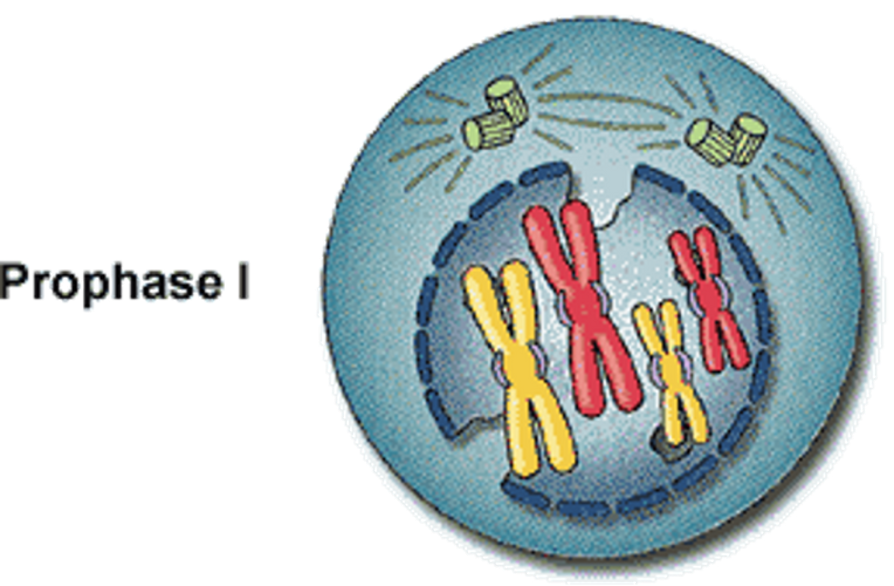
Metaphase 1
•Chromosomes line up on the equator of the cell in homologous pairs.
•Spindle fibres attach to the centromeres of each chromosome.
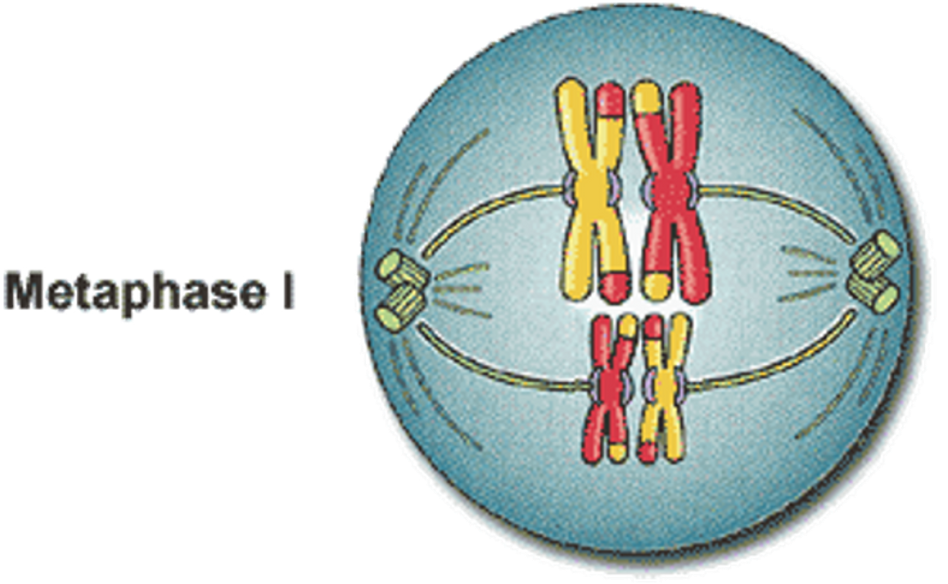
Anaphase 1
•Spindle fibres contract towards the centrioles.
•Homologous chromosomes separate and move to opposite poles of the cell.

Telophase 1 + cytokinesis
•Telophase I: nuclear membrane forms around the two groups of chromosomes in the cytoplasm of the cell; spindle fibres break down.
•Cytokinesis occurs.
•Two haploid cells form, each with one complete set of chromosomes.
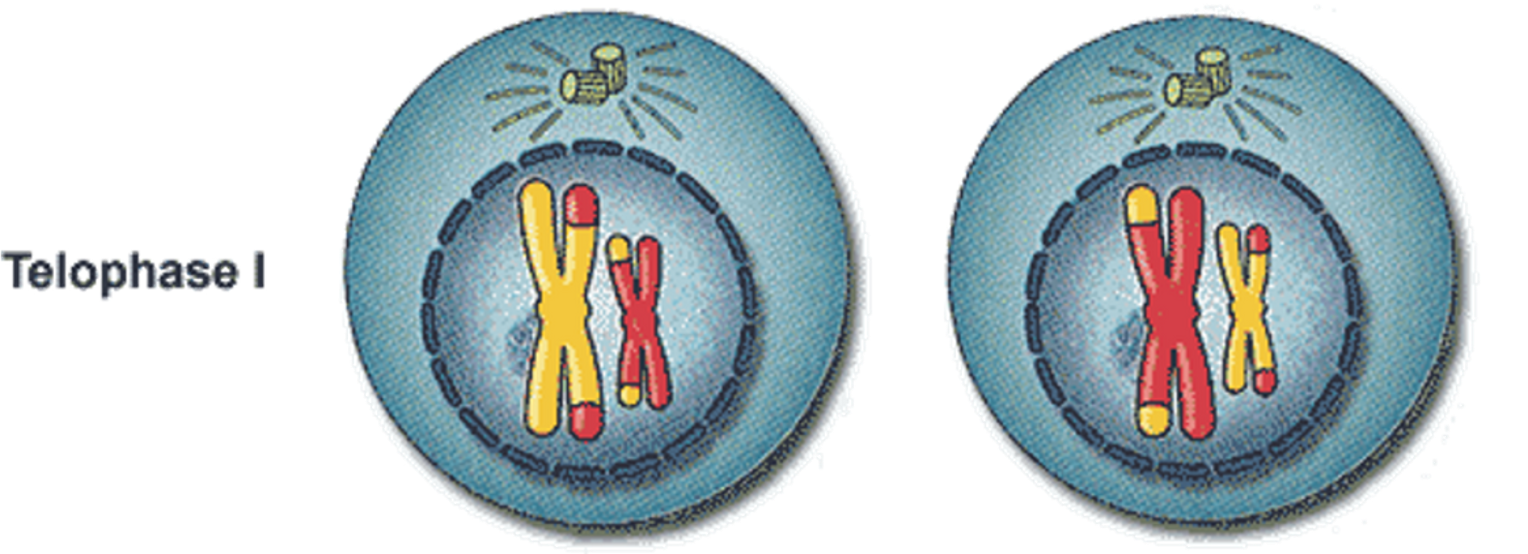
Prophase 2
•Centrioles migrate to the poles of the cell and produce spindle fibres.
•Nuclear membrane breaks down.
•Chromosomes condense and become visible in the cytoplasm of the cell.
•Chromosomes begin migrating to the equator of the cell.
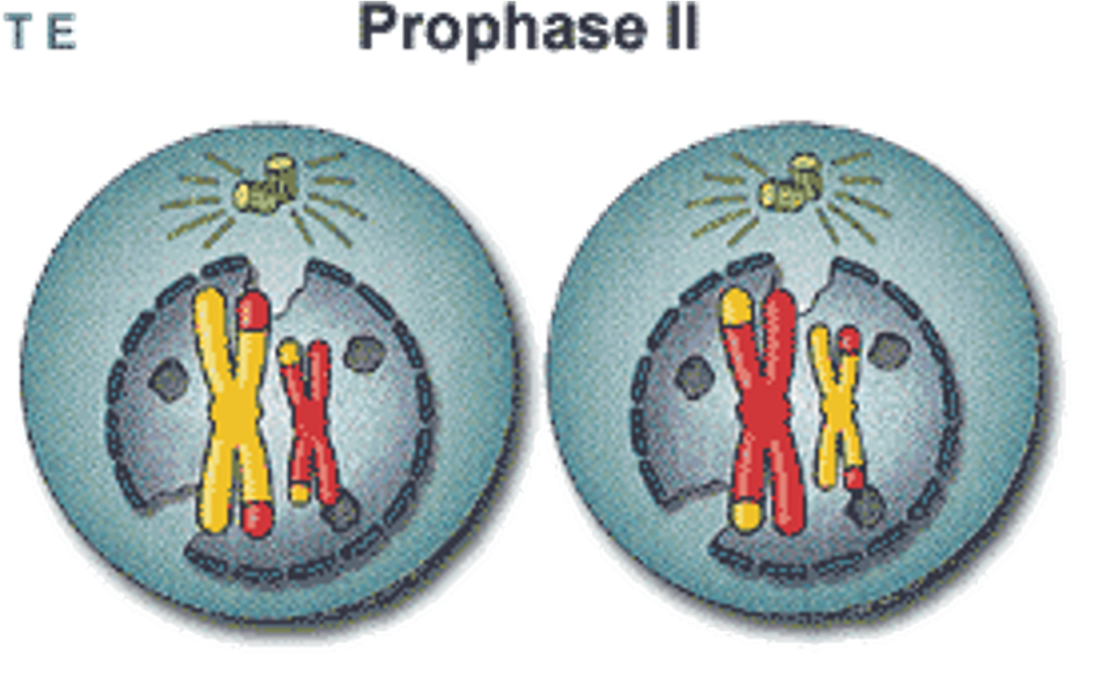
Metaphase 2
•Chromosomes line up head-to-toe on the equator of the cell.
•Spindle fibres attach to the centromeres of each chromosome.
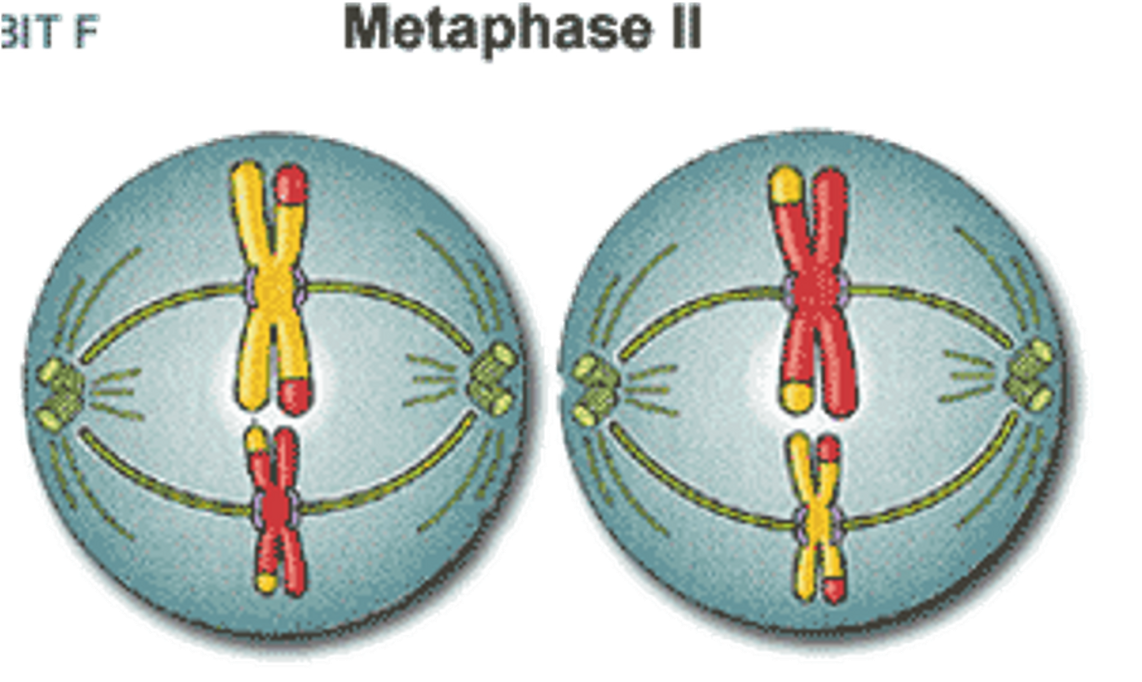
Anaphase 2
•Spindle fibres contract towards the centrioles.
•Chromosomes separate and the chromatids are pulled to opposite poles of the cell.
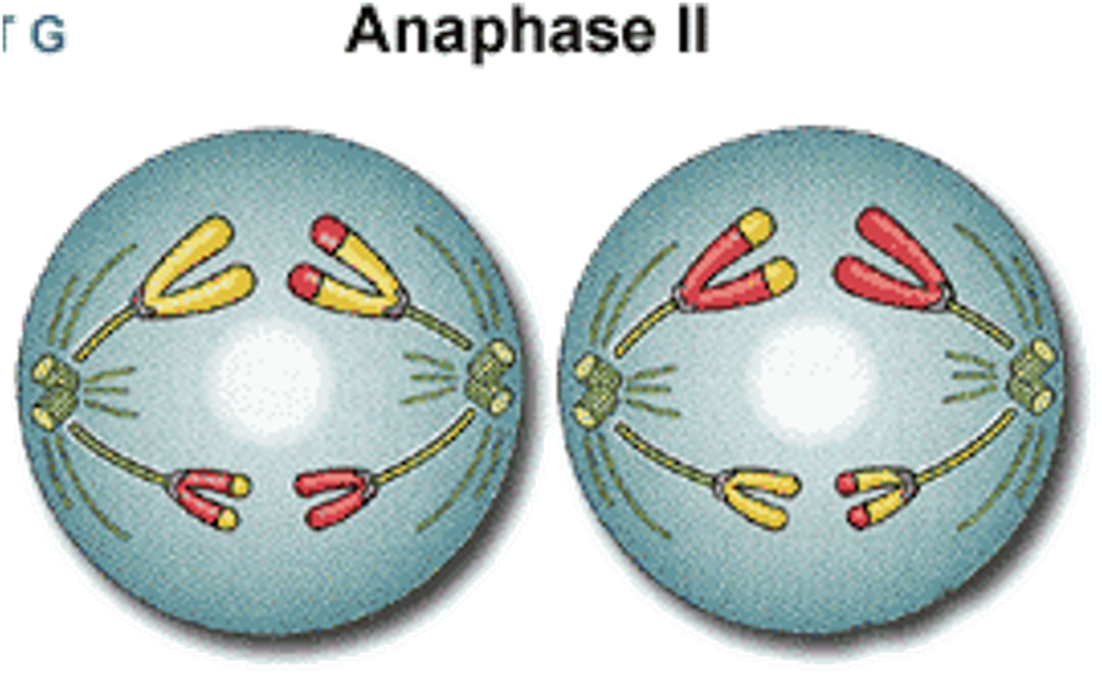
Telophase 2 + cytokinesis
•Telophase II: nuclear membrane forms around the groups of chromosomes in the cytoplasm of the cell; spindle fibres break down.
•Cytokinesis occurs.
•Four haploid cells form, each with one complete set of chromosomes.
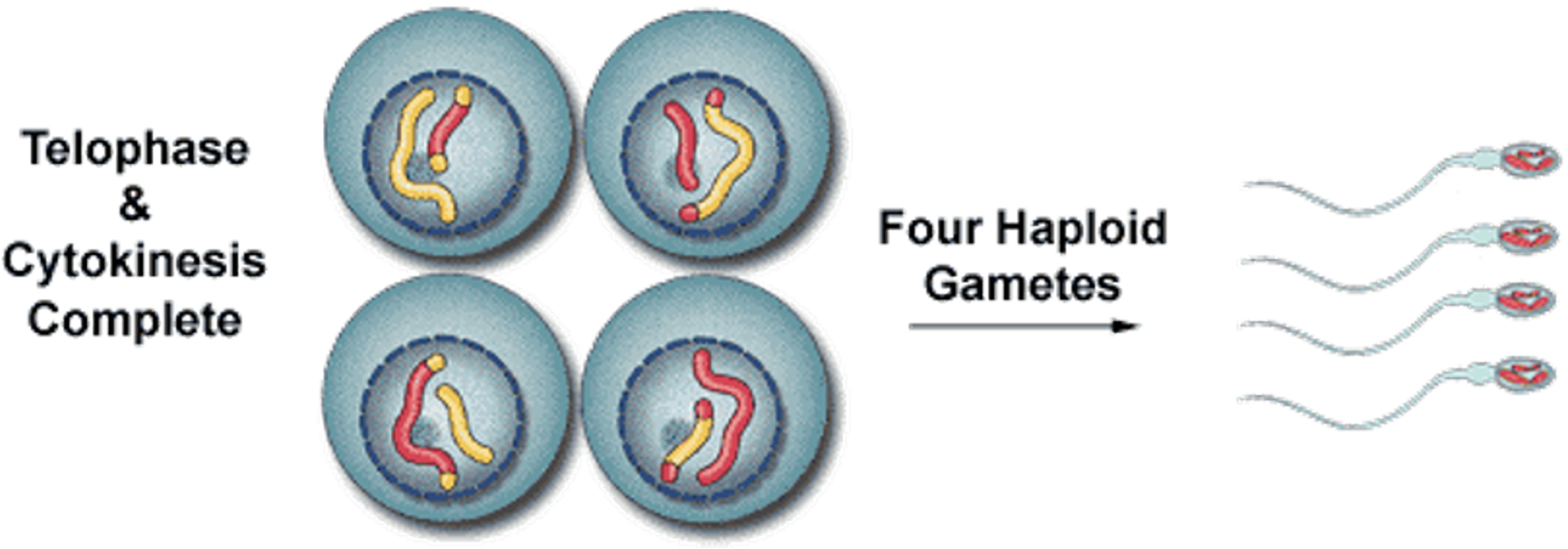
Differences between mitosis and meiosis
Meiosis = 4 Haploid daughter cells
Mitosis = 2 Diploid cells
Mitosis = 1 cell division
Meiosis = 2 cell divisions
Mitosis = genetically identical daughter cells
Meiosis = daughter cells aren’t identical
Similarities between mitosis and meiosis
Come from single diploid parent cell (46 chromosomes)
During metaphase in mitosis and metaphase II in meiosis the chromosomes line up on the equator of the cell head-to-toe.
During anaphase in mitosis and anaphase II in meiosis the chromosomes are separated by the spindle fibres at the centromere and the chromatids are pulled towards the poles of the cell.